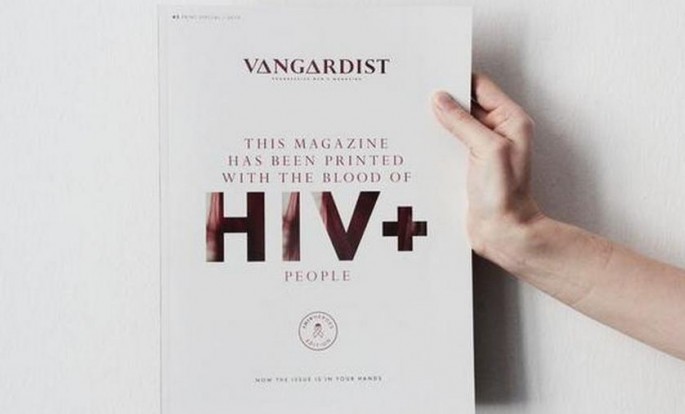The Austrian magazine, "Vangardist", has printed the cover of its latest issue with ink mixed with HIV-Positive blood in a stunning move to draw attention to the unabated rise in HIV and AIDS worldwide.
The outrageous and to some, grisly, gimmick was limited to only 3,000 copies of the magazine whose cover headline reads, "This Magazine Has Been Printed With The Blood of HIV+ People".
The special edition of the lifestyle magazine features stories of "HIV heroes" at a time when the editors say too many people have grown complacent about the disease.
Vangardist, which bills itself as a "Progressive Men's Magazine" ("Progressives Männer Magazin"), printed the issue to coincide with the famous Life Ball in Vienna that raises money for HIV/AIDS issues.
Jason Romeyko, creative director of Saatchi and Saatchi that worked with the team at Vangardist to develop the idea, said the goal of the special issue was to confront the readers' stigma about the disease and to get people to talk about the disease again.
"There's been an 80 percent increase in HIV in the last 10 years -- that's according to the World Health Organization -- and that's pretty shocking," said Romeyko. "The reason why that's happening is people just aren't talking about it anymore", said Romeyko, according ABC News.
"People feel that the problem is solved and feel nothing is happening,"
Romeyko reassures readers the cover is "100 percent safe" to handle, however.
"Scientifically, the virus dies naturally outside the body. It takes about 30 minutes for it to decompose," Romeyko said. The U.S. Centers for Disease Control and Prevention said HIV doesn't survive outside its host for long.
The editorial team used the blood of three HIV-positive volunteers to publish the cover. The blood was then added to the ink and dye powder used to print the cover.
"We wanted people to actually hold the magazine and just make the comparison -- there's nothing wrong with holding someone who's HIV positive," said Romeyko.



























